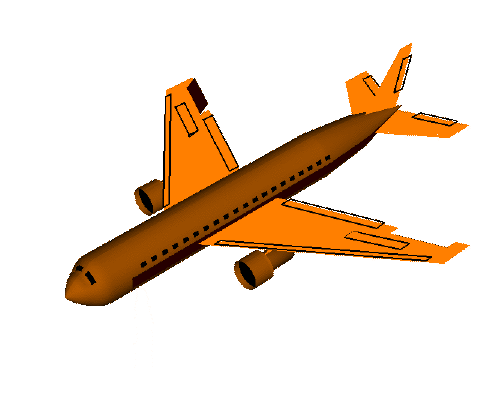 | ||||
| What is aerodynamics? The word comes from two Greek words: aerios, concerning the air, and dynamis, which means force. Aerodynamics is the study of forces and the resulting motion of objects through the air. Judging from the story of Daedalus and Icarus, humans have been interested in aerodynamics and flying for thousands of years, although flying in a heavier-than-air machine has been possible only in the last hundred years. Aerodynamics affects the motion of a large airliner, a model rocket, a beach ball thrown near the shore, or a kite flying high overhead. The curveball thrown by big league baseball pitchers gets its curve from aerodynamics. | ||||
|
At this Web site you can study
aerodynamics at your own pace and to your own level of
interest. Some of the topics included are: Newton's basic equations of motion; the motion of a free falling
object, that neglects the effects of aerodynamics; the
terminal velocity of a falling object subject to both weight and
air resistance; the three forces (lift, drag, and weight) that act on a glider; and finally, the four forces that act on a powered airplane. Because aerodynamics involves both the motion of the object and the reaction of the air, there are several pages devoted to basic gas properties and how those properties change through the atmosphere.
This site was created at NASA Glenn as part of the Learning Technologies Project (LTP). It is currently supported by the Aeronautics Research Mission Directorate at NASA HQ through the Educational Programs Office at NASA Glenn. The purpose for this web site is to provide background information on basic aerodynamics as teaching aids for math and science teachers. Some of the slides were prepared to support FoilSim,
an interactive educational computer program
that allows students to design and test airfoil shapes on
a personal computer. Other slides were prepared to
support the Digital Learning Network (DLN) videoconferencing
workshops for teachers and students. The slides were collected into Power Point Presentations which are made available to teachers and students.
There is a special section of the Beginner's Guide which deals with compressible, or high speed, aerodynamics. This section is intended for undergraduates who are studying shock waves or isentropic flows and contains several calculators and simulators for that flow regime.
This site has been intentionally organized to mirror the
unstructured nature of the world wide web. There are many
pages here connected to one another through hyperlinks and
you can then navigate through the links based on your own
interest and inquiry. There is an Aerodynamics Index
of topics that you can access from any page, so you are
never more than two clicks away from any other Web page at
this site. However, if you prefer a more
structured approach, you can also take one of our Guided Tours through the site. Each tour provides a sequence of pages dealing with some aspect of aerodynamics.

NOTICE --- The site has been developed to support Section
508 of the Rehabilitation Act. Many of the pages contain
mathematical equations which have been produced
graphically and which are too long or complex to provide
in an "ALT" tag. For these pages, we have retained the
non-compliant graphic at the top of the page and have
provided a compliant text version of the equations in the
body of the page. In many cases, because of the use of Greek fonts in
the graphics, the purely English text version of the
equations is slightly different than the graphic version.
The differences are noted in the text.
Editor: Tom Benson NASA Official: Tom Benson Last Updated: Sep 08 2010 + Contact G | ||||
AERODYNAMIC
Langganan:
Komentar (Atom)




Tidak ada komentar:
Posting Komentar